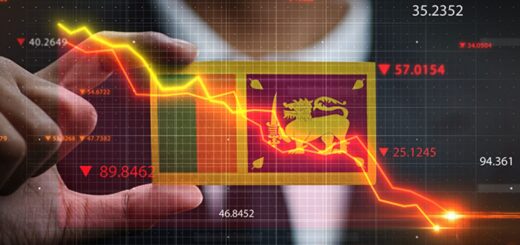It’s reality check time for critics of Sri Lanka
Since Bruce Haigh (”Diplomats paint one-sided picture of Sri Lanka”, December 28, p15) has singled me out by name for defending my country – which is my duty as Sri Lanka’s consul-general in Sydney – I would point out that he shouldn’t have rushed into places where better informed commentators would fear to tread.
He refers to the origin of the Sri Lankan flag. There are 192 flags flying at the UN and only the Sri Lankan flag has given a place to the Tamils. Not even India. The design of the Sri Lankan flag came out of consensual agreement signed by Tamil and Muslim community leaders immediately after independence. Haigh’s claim that neutral symbols were rejected is a bizarre fantasy not substantiated by the historical facts.
Error 2: Both at the grassroots and highest political level Sinhalese have shared power. After independence in 1948 every cabinet had Tamil and Muslim ministers. If Haigh cares to go back to his text books he may learn the difference between sharing power and separatism.
Error 3: Sri Lanka had 30 years of terrorism. The international community banned the Tamil Tiger terrorists, led by Prabhakaran, ”the latest Pol Pot of Asia” (James Burn, The New York Times, June 25, 1995). Moderate Tamil leaders have condemned Prabhakaran as the ”Tamil tyrant who killed more Tamils than all the others. If Haigh were to remove his anti-Sri Lankan blinkers he may see the reality in a better light, and it is 2012 and not 1994.
Error 4: Referring to South Africa and East Timor he says that ”the truth will be out [about] the treatment of Tamils in Sri Lanka”. I don’t know in what part of Sri Lanka he was when he was deputy high commissioner but if he had his ear to the ground, as every diplomat should, he would have understood or tried to understand how terrorists were destroying my country.
What was he doing when the terrorist tyrant Prabhakaran forcibly kidnapped under-aged children on their way to school and thrown as fodder into a futile war? In the name of separatism he ruled with an iron fist, killing all peace-makers, including India’s Rajiv Gandhi. He decimated the entire Tamil leadership in mainstream politics. Sri Lankan Tamils were only liberated by President Mahinda Rajapaksa and the Sri Lankan security forces. It is time Haigh took a reality check on the ground situation in Sri Lanka.
Last but not the least he picks on my comments about the remnants of the pro-LTTE lobby penetrating Australian borders in the guise of asylum seekers. This is a fact known to Sri Lankan and Australian intelligence units. Besides, people-smuggling has been a common tactic of the LTTE to pack Western electoral constituencies with pro-LTTE agents who in turn can influence decision-makers at the highest levels to push an anti-Sri Lankan agenda. I forgot to mention the other hidden agenda: they exploit the available social security systems to collect money to finance their violent politics – a violation of Security Council resolution 1373.
The Sri Lankan government put an end to the violent ”human rights” (which Haigh is promoting heavily) record of the LTTE when it crushed them in May 2009. With all the infirmities that can exist in a postwar situation the Sri Lankan government has established a sound record of rehabilitating LTTE cadres and settling nearly 300,000 internally displaced people who were dragged from village to village, without food, water, shelter and medicine by the LTTE.
Peace may not restore ideal conditions overnight. But postwar Sri Lanka has taken the great leap forward to restore peace, dignity and self-respect to all citizens which were never available under the horrors of needless terrorism. These facts make it clear that Haigh’s knowledge of Sri Lanka is not that hot as it claims to be.
I am also sorry about Haigh’s desperate and futile attempt to create a wedge between myself and high commissioner Thisara Samarasinghe in Canberra.
Bandula Jayasekara is the consul-general of Sri Lanka in Sydney.



